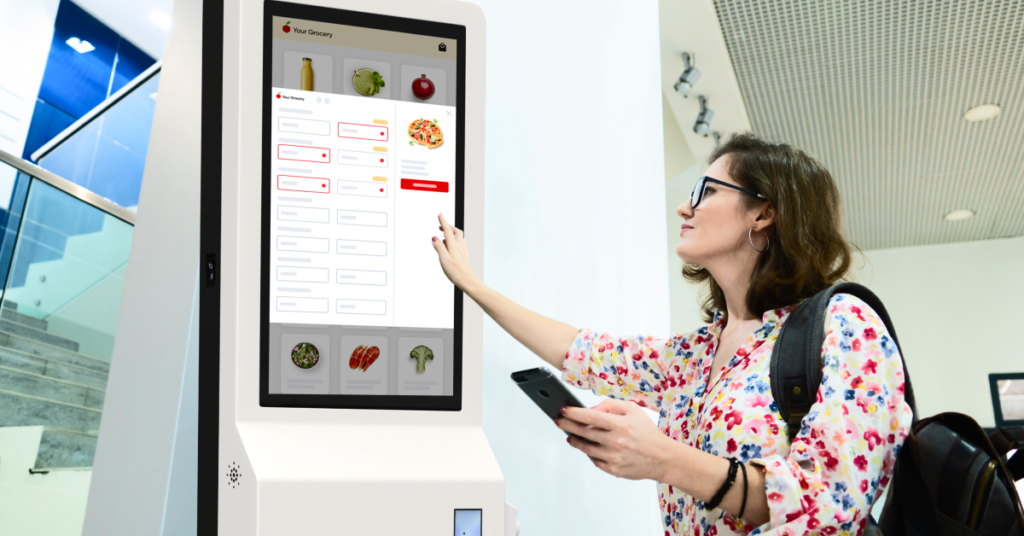Order entry kiosks revolutionize customer Seamless Self-Service interactions by offering a streamlined self-service experience. These systems enhance efficiency, reduce wait times, and minimize human errors. User-friendly interfaces empower customers to place orders independently while ensuring accuracy and convenience. Businesses benefit from increased order accuracy, faster processing, and reduced operational costs. By integrating advanced features like customizable menus and payment options, kiosks elevate customer satisfaction, making them an essential tool for modern, efficient service environments.
Introduction to Order Entry Kiosks
In today’s service-driven industries, the rise of the self-service restaurant kiosk marks a significant shift in customer interaction methods. These kiosks improve service efficiency and speed by enabling consumers to handle their transactions independently, minimizing the need for human employees, and freeing them up to concentrate on other facets of customer care. Implementing these systems has transformed the retail and food service sectors and made waves in healthcare and transportation. These kiosks meet the modern consumer’s need for convenience and self-service, allowing for a more streamlined and efficient transaction process that aligns with the fast-paced lifestyle of many leads today.
The Benefits of Self-Service Order Entry
The benefits of self-service kiosks extend far beyond mere efficiency gains. They offer a multitude of conveniences, such as the ability to browse through an entire menu or catalog at one’s own pace, leading to more informed decision-making. For businesses, kiosks can increase throughput, reduce error rates often associated with human operators, and allow staff to focus on complex customer needs that kiosks can’t accommodate. According to Forbes, adopting such technology boosts operational efficiency and can elevate the overall customer experience, encouraging loyalty and repeat business. Additionally, the information gathered from kiosk interactions can offer priceless insights into the preferences and activities of customers, which can be utilized to enhance product offerings and customize marketing campaigns.
Technology Integration and Challenges
Integrating kiosk technology into an existing business infrastructure takes time and effort. Two main Seamless Self-Service issues are ensuring the software solutions work with current systems and that data is securely handled to stop unwanted access. Businesses need help aligning these new technologies with their current practices, which can involve significant technical adjustments and investments. As TechCrunch highlights, successful integration requires overcoming technical challenges and redefining specific operational processes. This means training staff to support the technology and ensuring redundancy to handle demand spikes. Maintaining robust data privacy measures to protect customer information is crucial, especially in light of increasingly stringent data protection regulations worldwide.
Design Considerations for Effective Kiosks
Designing an effective kiosk involves several critical considerations to meet user needs. The user interface must be intuitive, providing easy navigation for users of all ages and tech-savviness levels. This can involve large, readable fonts, clear instructions, and a simple touch interface. Additionally, the physical design should account for accessibility, complying with standards like the Americans with Disabilities Act (ADA) to ensure that everyone, including individuals with disabilities, can use the kiosks without assistance. Placement within the store is also vital; the kiosks should be conveniently located to draw users’ attention without disrupting natural traffic flows. Attention to these details can significantly enhance user experience, making interactions smoother and more pleasant.
Impact on Businesses and Customer Satisfaction
For businesses, implementing kiosk technology can transform how customer service is delivered and perceived. The immediate impact is often seen in the reduction of wait times and the increased ability to handle peak-hour traffic without corresponding increases in staffing. Moreover, the data kiosks collect deliver actionable insights that can refine service offerings and marketing tactics. Increased customer satisfaction often arises from the personalization options kiosks offer, such as recommending additional purchases based on previous behavior, thereby enhancing the sales process. By placing control in the hands of the consumer, businesses can foster a more engaging and satisfying shopping experience.
Future Trends in Self-Service Technologies
The evolution of self-service technology sets the stage for even more sophisticated user interactions. Future developments indicate that kiosks will be increasingly integrated with the Internet of Things (IoT) and artificial intelligence (AI), allowing for more individualized interactions. AI could process natural language requests or analyze consumer data to tailor user experiences uniquely. Meanwhile, IoT might allow excellent connectivity with personal devices, enabling a seamless transition between online and in-store experiences. By leveraging these trends, businesses can provide cutting-edge services that meet consumer demands and anticipate future needs.
Real-World Examples
Real-world examples of successful kiosk implementations Seamless Self-Service showcase the broad applicability of this technology. In the fast food industry, kiosks have become a standard component of the customer experience, allowing patrons to customize orders quickly and efficiently while cutting down on queues. Retail giants have adopted kiosks to handle purchasing and returns, reducing congestion and improving service times. These implementations highlight how flexible and adaptable kiosks are, providing a template for other industries looking to enhance their service delivery through self-service solutions.
Final Thoughts on Kiosks in Service Industries
Adopting kiosks in service industries is primarily about enhancing client experience and service, not merely staying updated with technology developments. For businesses, this means focusing on the hardware and software and investing in these systems’ strategic placement and ongoing support. As these technologies evolve, keeping user experience at the forefront will ensure that kiosks remain valuable in customer-facing operations, driving both satisfaction and efficiency.

